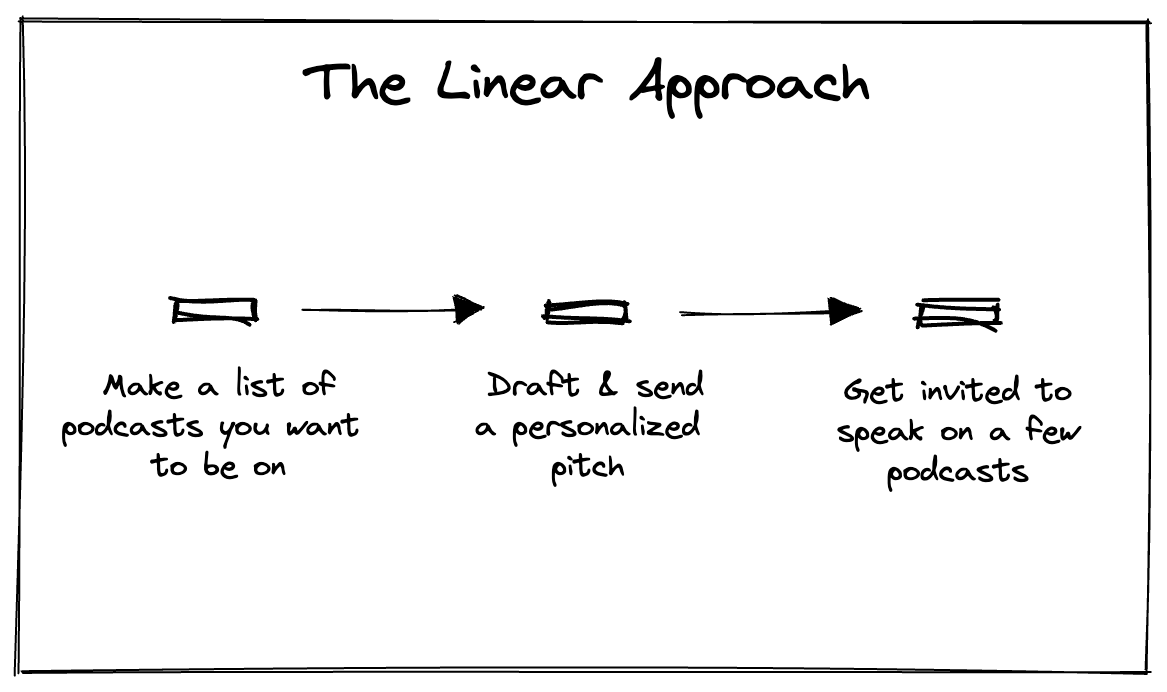From Scattered to Streamlined: The Power of Flywheels in Your Business
Let me ask you a question: Where in your business are you exerting yourself for results that are barely “meh”?
Maybe it’s growing your email list or social media following, maybe it’s increasing conversions for your course, or maybe it’s trying to get on more podcasts.
If you could think of at least one area, it’s time to take a step back and look at the macro level of how you operate in your business (we don’t do this often enough!)
At Craft + Commerce, ConvertKit CEO Nathan Barry shared the concept of the flywheel and we explored how to move from scattered random actions to automatically producing more of the outcomes we want with minimal input.
Let me explain using an example Nathan gave that stuck with me…
1. The Scattered Approach
This is where most businesses start. You do things at random – reacting to external circumstances instead of acting intentionally. And that’s absolutely OK in the beginning as you’re still figuring things out and experimenting.
Example: Let’s look at what the scattered approach looks like for speaking on other people’s podcasts.
The next approach you naturally move to is to create a process…
2. The Linear Approach
Once you’ve done the same thing a couple of times, a standard process emerges that you follow. You start to get more strategic.
Example: Here’s what a linear approach looks like for our podcast example.
Unfortunately, this is where most people stop. But there’s another approach…
3. The Flywheel Approach
In a flywheel, different parts of a business work together to drive growth. The term was first popularized by Jim Collins in his book Good to Great, and has been further developed by companies such as Amazon.
The power of the flywheel is that it's a cycle: as you add energy into each part, it gains speed and momentum, and that energy feeds back into the entire process. The more it turns, the more it keeps turning, creating a self-reinforcing loop of growth.
It takes effort to get a flywheel going at first, but once it spins, it requires minimal input from you.
Example: To turn our linear approach to podcast appearances into a flywheel, we have to consider how the last step of the process can feed back into the first one.
Instead of pitching to podcasts, you could heavily promote the podcast episodes you’ve been on to make them a success for the podcaster. This exposes you to other podcasters who now also want you to speak on their shows.
More Flywheel Examples
Here are three other examples of flywheels to inspire your own.
Infinite Content Flywheel
This flywheel answers the question “What should I write/make a video about?” by feeding you a constant stream of suggestions from your audience. The result is newsletter growth since your content aligns with your audience’s struggles/goals and attracts more of the right people.
Sponsorship Flywheel
Justin Moore ran an excellent workshop at Craft + Commerce about monetizing your audience with sponsorships. He recommended two steps that are easy to miss: Always prepare a report to show the sponsor which results you got them and always pitch the next collaboration. This turns a linear approach into a flywheel. (Btw, I can highly recommend joining his Creator Wizard newsletter.)
Referral Flywheel
By introducing a referral program, you can reward your most successful students for spreading the word about your course and increasing sign-ups.
The flywheel approach can move your business from random acts to self-sustaining, momentum-driven processes. Which scattered or linear approach could you turn into a flywheel?





